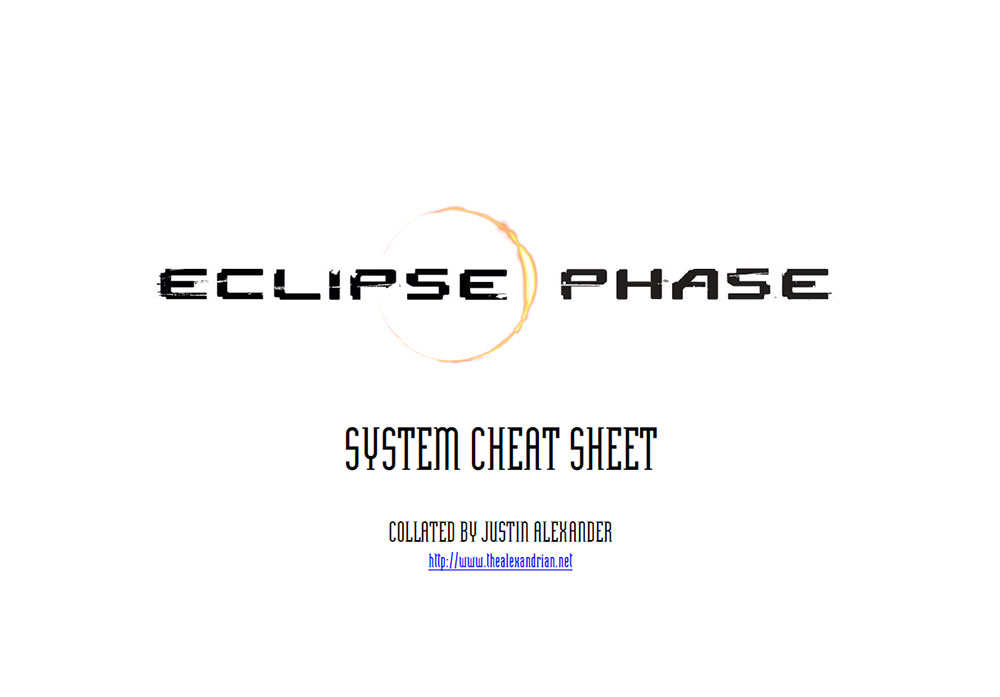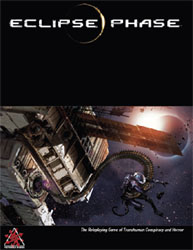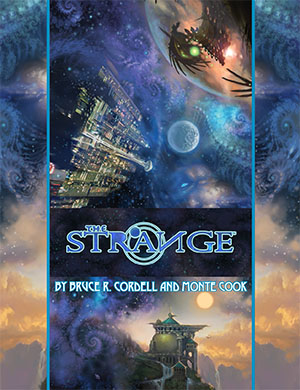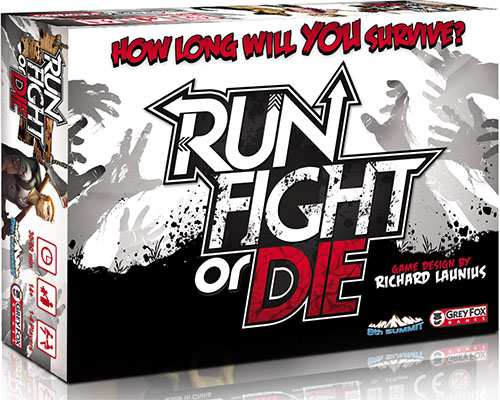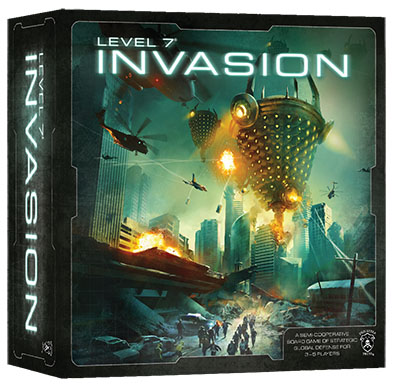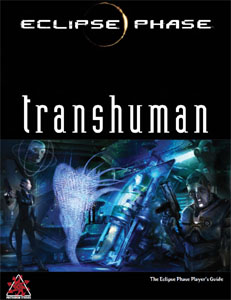As I’ve mentioned in the past, I frequently prep system cheat sheets for the RPGs I run. These summarize all the rules for the game — from basic action resolution to advanced combat options. It’s a great way to get a grip on a new system and, of course, it also provides a valuable resource at the game table for both the GM and the players. (For more information on the methods I use for prepping these sheets, click here.)
This particular set of cheat sheets was designed for Eclipse Phase. It should be noted that these cheat sheets aren’t designed to serve as a quick start packet: They’re designed to be a comprehensive reference for someone who has read the rulebook and will almost certainly prove wholly insufficient for teaching you the game. (Although they do serve as a valuable adjunct reference if you’re teaching someone the game.)
VERSION 2
A couple years ago I posted a system cheat sheet for Eclipse Phase. At the time, I was still designing my system cheat sheets primarily to serve as packets of reference material. As a result, the sheets were designed to be printed in portrait orientation. Shortly thereafter, I began experimenting with incorporating the sheets into my GM screen, using a restickable glue stick to create a Post-It-like bond for attaching the pages to the Eclipse Phase GM Screen.
As I discussed in On the Use of GM Screens, however, I prefer landscape screens and I now use a customizable screen. As a result, I started using landscape formatting for my cheat sheets, with an eye towards using them in the screen. This has proven to be a huge success, and I’ve also found that the landscape format is conducive to better, tighter organization of the material as well.
I’ve now revisited my Eclipse Phase sheets and converted them to a landscape formatting (along with several other improvements and corrections. If you still want a copy of the original, portrait-oriented sheets, you can find them here.
WHAT’S NOT INCLUDED
The most notable absence from these cheat sheets are what I refer to as “character option chunks” (for reasons discussed here). So you won’t find psi sleights or the effects of specific nanodrugs listed here.
HOW I USE THEM
I keep a copy of these cheat sheets behind my GM screen for quick reference and also place a half dozen copies in the center of the table for the players to grab as needed. The information included is meant to be as comprehensive as possible; although rulebooks are also available, my goal is to minimize the amount of time people spend referencing the rulebook: Finding something in the 14 pages of the cheat sheet is a much faster process than paging through a 400 page rulebook. And, once you’ve found it, processing the streamlined information on the cheat sheet will (hopefully) also be quicker.
The organization of information onto each page of the cheat sheet should, hopefully, be fairly intuitive. The actual sequencing of pages (combat before hacking, hacking before psi) is mostly arbitrary. The sheets as they currently exist have been tweaked several times based on actual play experience.
PAGE 1 – BASIC MECHANICS: Most of the stuff on this page should become irrelevant fairly quickly because players are going to rapidly memorize it through play. The information in “Your Muse and You” is more verbose and advisory than the sort of material I normally include in a system cheat sheet, but after a few sessions I found that new players were routinely under-utilizing their muses. Adding this chunk of material significantly improved this. The Common AI stat blocks also facilitate muse usage,but are generally a useful reference for a world filled with AI agents.
PAGE 2 – APTITUDES / SKILLS: A generally useful reference for any system (particularly one with this many different, overlapping skills). I use the Learned Skill Ranges reference for quick-generating NPC stat blocks (using a method I’ll probably end up sharing here at the Alexandrian at some point in the near future).
PAGE 3-4 – COMBAT REFERENCE: For new players, you can skip over the advanced options on the second page easily enough. (This is also a great example of the advantages of the landscape layout over the portrait layout: This same information took 3 pages in the original version of the cheat sheet and was considerably less user friendly.)
PAGE 5 – HEALING: I wrote in my notes for the original version of the cheat sheets that I wanted to include information for medichines, nano-bandages, and repair spray (the ubiquitous equipment used for healing), but didn’t want to spill the information onto multiple pages. All that information now fits on a single page.
PAGE 6 – MESH / BOTS / SYNTHS / VEHICLES: The new layout allowed for a major consolidation of material here. (The AI stat block for bots/vehicles has been moved to the Common AI stat blocks on the first page.)
PAGE 7 – HACKING / SECURITY: Three pages of information reduced to two pages, plus I was able to add a Software reference.
PAGE 8 – REPUTATION / SOCIAL NETWORK: I think this page may have actually worked better in the portrait layout.
PAGE 9 – RESLEEVING:
PAGE 10 – PSI / STRESSFUL SITUATIONS: One of the major oversights on the original sheets were the guidelines for Stressful Situations. (Which meant that my early EP players were getting off very lightly when confronted with horrific things!)
PAGE 11 – MISCELLANEOUS: What it says on the tin.
A SIMPLER SET
If you’re looking for a quick introduction to the system for new players, here’s what I recommend:
- Page 1: Basic Mechanics (tell them to report test results as “# out of #”, for example “I rolled 32 out of 65”)
- Page 3: Basic Combat (emphasize how valuable combat modifiers are)
- Page 5: Health and Healing (make sure they understand wound/trauma thresholds; you can’t trust players with their own bookkeeping until they do)
- Page 6: Basic Mesh usage (emphasize how valuable Research tests are)
- Page 8: Reputation / Social Networks (grokking this is like half the battle in understanding how the Eclipse Phase universe fundamentally works)
For this approach to work, you’ll want to avoid PCs that are focused on jamming, hacking, or psi. That’ll be very limiting in a long-term campaign, unfortunately, so you might want to start with a couple of one-shots to build up system familiarity. Or, alternatively, set aside time with the specific players interested in those areas to review those rules.
There is also, of course, setting information that you’ll want to pass on. I recommend 10 Things You Should Know About Eclipse Phase as a good way for accomplishing that.
MAKING A GM SCREEN
As mentioned, these cheat sheets can also be used in conjunction iwth a modular, landscape-oriented GM screen (like the ones you can buy here or here).
Personally, I use a four-panel screen and use reverse-duplex printing in order to create sheets that I can tape together and “flip up” to reveal additional information behind them.
The Eclipse Phase: System Cheat Sheet is licensed under the Creative Commons Attribution-Noncommercial-ShareAlike 3.0 Unported License.

